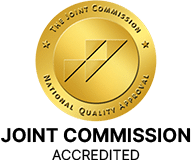As shown by the United States Department of Health and Human Services, one in seven people between the ages of 18 and 25 have both a substance use disorder and any kind of mental-health condition. This relationship between two separate conditions is called comorbidity. There are several reasons that people with substance use disorder lie: shame, denial, and in the end stages of the disorder, an intense desire to acquire the substance and use it, often to the exclusion of everything else. It’s crucial to understand that when the condition progresses to the final stages, the person with SUD is powerless against it. Read on to understand further the relationship between lying and SUD.
Table of Contents
The Cycle of Substance Use Disorder

What Exactly Is Substance Use Disorder?
First, it’s important to note that SUD is a mental illness. Although it’s treatable, it causes the users to lose their ability to control their use. Some substances even cause personality changes that exacerbate the effects of that loss of control. Of course, the condition begins with a conscious choice to use the substance in question, but it nearly always degenerates into a circular quagmire from which there is no escape without help. The speed with which the degeneration progresses varies from person to person, however.
The Stages of Substance Use Disorder
After that initial use, the progression is largely the same no matter the substance in question. The speed with which the stages progress changes from substance to substance. With alcohol, for example, the progression will be slower than it would with methamphetamine. The stages after initial use are:
- Misuse
- Developing Tolerance
- Dependence
- Return to use
It must also be borne in mind that the term “abuse” is now out of favor because of the stigma it visits upon those people experiencing substance use disorder. As well, the term addiction, though still in widespread colloquial use, is rapidly going the same direction.
Misuse consists of using a beneficial drug, such as a painkiller, in a way that was never intended or prescribed. Or, it could also be using a dangerous substance of some sort that is inherently harmful.
Developing tolerance occurs when the body doesn’t create the same amount of dopamine in response to the use of the substance, which then requires the person to use more of the substance or to use the substance more frequently to achieve the same desired effect.
Dependence is the state where the person develops a psychological need, physical need, or both for the substance. Indeed, when it comes to alcohol, quitting cold turkey after prolonged use could result in death because of the high physical dependency the person has on the alcohol.
The term “relapse” is, in much the same way as is “abuse,” seen as stigmatizing and is now replaced with “return to use.” In many cases the rates of return to use are simply staggering and require specialized treatments for the rest of the person’s life. In fact, in a broad cross section of the population of people who experience SUD, more than 50% return to use. And, most often, those who return to use do so within 90 days of having completed a treatment program.

The Role of Deception in the Cycle
Lying and SUD go hand-in-hand. Even people without SUD tell, on average, 1 or 2 lies per day. This shows that most people, who only interact with between two and six people a day at more than a, “Hi, how are you?” level, lie as much as a third of the time.
When you factor in SUD, the number of lies rapidly increases. People lie to hide the fact that they have SUD. They lie to keep their jobs. They lie to avoid judgment and shame. They lie to cover up previous lies. They practice denial. How many times have people said things like, “I don’t have a problem with alcohol. I just need a few beers to unwind after work.” Those “few beers” soon become a veritable deluge. At that point, the lies become tools for manipulation to get more of their chosen substance.
People also don’t want to be mocked. In the 1970s, there was a bumper sticker and T-shirt slogan that read: “I don’t have a drinking problem. I drink. I get drunk. I fall down. No problem.” Such making light of the problem of alcohol use disorder was detrimental to people who had the condition because it perpetuated the stigma attached to it. At the end stages of the disease, people simply lie so that they can get more of their substance of choice. They also begin to lie because it has become second nature to them. The horrible truth of their own situation becomes traumatic in and of itself.
The Impact of Lying on Relationships
Lying breeds mistrust. The person with SUD lies, and once those lies are found out, the people in that person’s world begin not to trust the person. At work, the consequences of such lost trust will usually wind up with the person being terminated. Then, the stress of the loss of livelihood becomes a stressor that causes more substance use.
When it comes to family and friends of the person who has SUD, they worry about not only the consequences of the lying but also about the consequences of untreated SUD, which can sometimes end in death. They also worry about their own interactions because different people react to such stressors differently than each other.
That worry about interactions with both the person with SUD and with other family members and friends can lead to codependency, a state of being where one person cares for another person to the point that the first person’s needs are unhealthily suppressed. Generally, people doing the caring begins to believe that the only worth they have is in caring for the second person. The first person becomes dependent on performing the caring in the same way that the second person becomes dependent on the first person’s care. Often, the care descends into enabling while the second person learns manipulation. In the milieu of SUD, where manipulation and lying are already intertwined, codependency can become dangerous for both people.
Recognizing Deception
When you realize that deception is very likely present, the signs become obvious. The person will avoid answering questions at all costs. The person’s behavior won’t match what was previously said. The person won’t remember discussions. In some cases, the person will gaslight others in an attempt to hide the deception.
It’s important that, when confronting a liar, there be no escalated conflict that will push the person away. Calmly point out the lie, and adopt a supportive approach. “You don’t need to lie to me. I’m here to support you. Let’s get you the help you need,” are examples of good sentences to use when confronting someone about SUD and deception.

Breaking the Cycle
At some point, people with SUD must strive for recovery or face dire consequences up to and including their own deaths. Treatment is available for many forms of SUD. Also, in the case of certain substances, the current trend is toward supportive treatment rather than punitive. One such substance is heroin, which wreaks such havoc on brain chemistry that it causes not only permanent and irreversible personality changes, even after completion of treatment, that it is nearly impossible to live a life of abstinence thereafter. In these cases, using substitute substances is becoming not only more acceptable but also the treatment of choice. The idea is that it’s no different than people with hypertension taking medication to keep their blood pressure at their baseline to save their lives.
There are three main treatment options for substance use disorder: outpatient, inpatient, and residential. Outpatient treatment is for the mildest cases. For example, Joe uses meth once, comes to his senses, and doesn’t want to use again. Joe signs up for an outpatient treatment program because he is still able to function: going to work, maintaining healthy relationships, etc. Conversely, Bill has used heroin for a while and has begun the cycle of lying. Bill might need an inpatient treatment program, not for the least of reasons that he needs to detoxify from heroin. Finally, Clive has drunk alcohol for so long that quitting at all could be disastrous without 24-hour supervision. He might need a residential program, which is similar to an inpatient program but much longer in duration: a year versus the 30 days of an inpatient program.
Therapy and support are both crucial parts of the recovery paradigm. In fact, a lot of the time, family members and friends are part of the therapy itself, and the whole group learns strategies for controlling the person’s SUD over the long term. Everyone involved has to learn to support without enabling along with holding the person accountable.
Conclusion
Strong character, force of will, and, “Just saying, ‘No,'” are not enough to overcome SUD. Because treatment is vital for your success in controlling your SUD, contact us to get started on a new life path through counseling, support, and if necessary, medical intervention.
FAQ
Why Do Addicts Lie and Manipulate?
How Can You Tell Your Loved One is Lying to You?
Published on: 2024-08-12
Updated on: 2025-04-29



